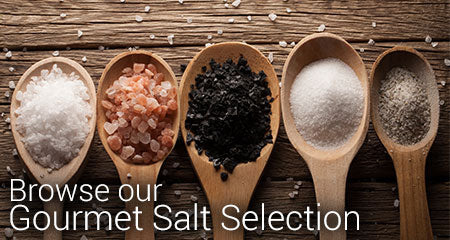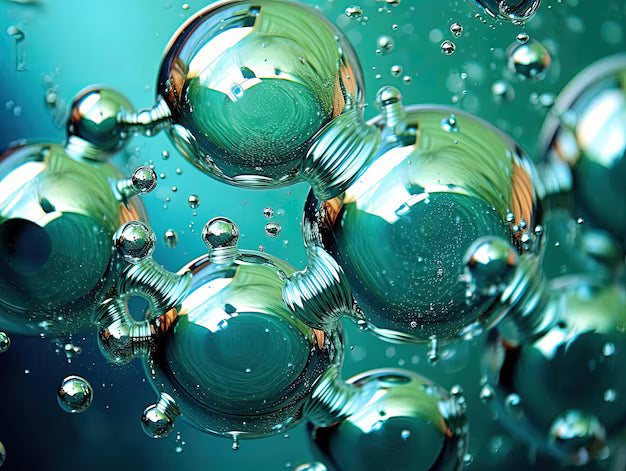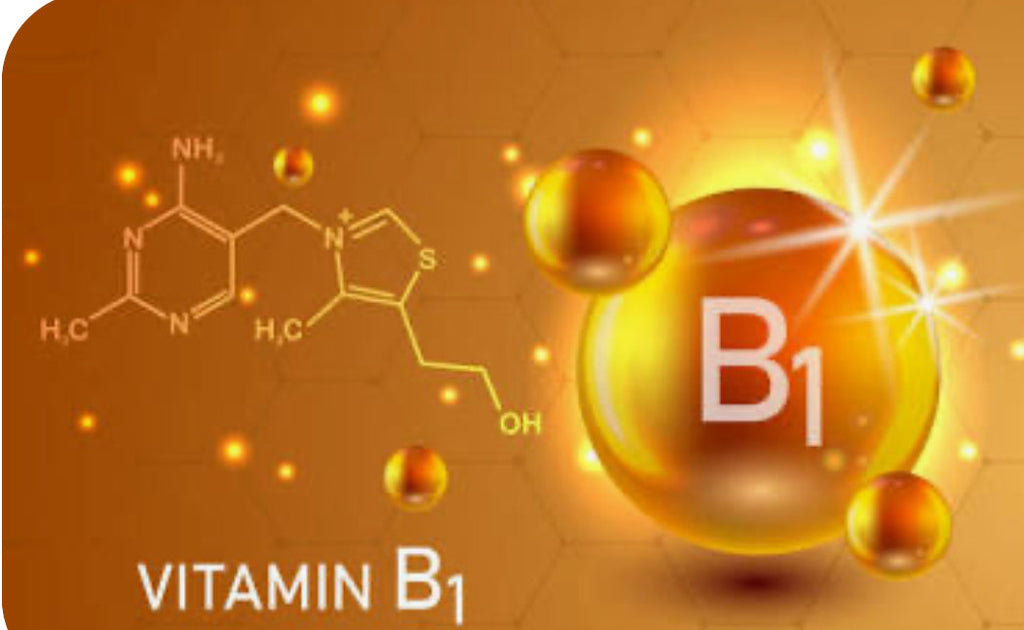Are You Glycating Your Tissues? - Blog # 79

Hello Everyone! Welcome back to another Friday blog. Today I want to highlight a phenomenon happening inside our body - where we can’t see. It is called glycation. Glycation happens when glucose/fructose/galactose molecules bind to blood vessels, proteins and other tissues due to high levels of blood sugar. “The accumulation of glycated macromolecules, including proteins, is a hallmark of aging both in humans and experimental animals.” Aging literally is the accumulation of damage to an organism that leads to dysfunction and death. We can slow and even reverse some of this damage. Let’s delve in.
What exactly is glycation? “Glycation is a spontaneous non-enzymatic reaction of free reducing sugars with free amino groups of proteins, DNA, and lipids that forms Amadori products. The Amadori products undergo a variety of irreversible dehydration and rearrangement reactions that lead to the formation of advanced glycation end products (AGEs).” This process happens both inside our bodies and in prepared food we consume. Think of a donut. Lots of sugar heated in vegetable oil (highly oxidizable and turns to trans-fat with repeated heating) - When we combine refined carbohydrates with protein or fat, we get glycated food - when we consume this pre-glycated food, it clogs our arteries and causes wide-spread damage in the body. “The AGE levels in heat-treated foods are 10–100 times higher than those in untreated foods. The highest AGEs levels were found in fried and barbecued foods, followed by baked foods, and the lowest AGE levels were found in boiled foods.” In fact, if you want to consume 100% glycated food, reheat your food in a microwave - 😳 I had no idea. I no longer do this.
Since this process is irreversible, it causes enzymes to become non-functional - or can alter DNA leading to poorly functioning cells - which leads to malfunctioning organs - pathologically advancing and speeding up the aging process. It is the initiating step toward auto-immune diseases - as is the case with gluten containing the gliadin protein that - through molecular mimicry - begins to attack the thyroid or liver, for example. “Celiac disease (or gluten-sensitive enteropathy) is an autoimmune condition triggered by consumption of the gliadin fraction of gluten and other cereals…It is thought that the increased intestinal permeability allows toxins, cytokines, and antigens to reach the liver through the portal circulation and cause liver injury through release of pro-inflammatory mediators.”
The process of glycation happens even more in individuals with T2D (type 2 diabetes) - and with IR (insulin resistance) - which is most of us. In fact, according to the CDC, only 7% of us are metabolically healthy - and that number is probably high. Ever wonder what hemoglobin A1C actually is measuring? It is measuring the percent of glycated hemoglobin - that is the percent of hemoglobin with sugar molecules attached in the bloodstream - they are no longer able to deliver O2 to tissues. The higher your A1C, the more hypoxic and oxygen-starved your tissues become. Glycation results in AGEs (advanced glycated end products) that attach to receptors called RAGEs. “Exogenous AGEs in dietary foods also trigger organ dysfunction and tissue aging.” These create hardened and non-functioning tissues that cause further inflammation and damage other tissues in the vicinity. Our body becomes “enraged” due to the inflammation and damage occurring. The acronym is appropriate when we look at glycation in the brain - it literally shuts down the higher brain while allowing the lower to react- a person becomes enraged (like road rage) and behaves in a way that doesn’t make sense - the adult has left the room.
When we glycate the tiny blood vessels in the eye = we get cataracts and begin to lose our vision. When we glycate tiny nerve endings = we get neuropathy, dementia and Alzheimer’s. If it is happening to your cartilage = we get joint arthritis - depending on where it’s happening. If it is the blood vessels supplying the kidney = we get chronic kidney disease - or even cancers. “Glycated hemoglobin causes an increase of highly reactive free radicals inside blood cells, altering the properties of their cell membranes. This leads to blood cell aggregation and increased blood viscosity, which results in impaired blood flow. Another way glycated hemoglobin causes damage is via inflammation, which results in atherosclerotic plaque (atheroma) formation.”
“CD147 is a transmembrane glycoprotein that becomes active when highly glycosylated and participates in several physiological processes.” CD147 upregulates the production of MMPs (metalloproteinases). MMPs are a group of enzymes that are responsible for extracellular matrix degradation and tissue remodeling. Increased expression of MMPs was detected in atherosclerotic plaques, and higher levels of circulating MMPs have been reported in patients with acute myocardial infarction, unstable angina, and hypertension.” It also includes cancer - invasion and metastasis - atherosclerosis, liver cirrhosis and coronary artery disease. A study published in Cells, 2021 reported: “The current findings indicate that AGEs and HG (high glucose) induce CD147 expression and glycosylation in adipocytes, with possible mediation by NFκB (nuclear factor kappa B) and RAGE. One of the critical outcomes of this pathway is augmented MMP activity known to contribute to cardiovascular complications in diabetes.”
There are three primary mechanisms by which AGEs induce injury to our tissues - contributing to the process of aging and age-related diseases:
- (1) accumulation of AGEs within the ECM (extracellular matrix) (such as collagen and elastic fibers) and cross-linking between AGEs and ECM causing a decrease in connective tissue elasticity
- (2) glycated modifications of intracellular proteins causing a loss of the original cellular function
- (3) interaction of AGEs with their cellular receptor (RAGE), leading to the subsequent activation of inflammatory signaling pathways, ROS generation, and apoptosis (cell death).
You don’t have to be obese to suffer the consequences of metabolic syndrome (MetS) and glycating your tissues. Recent studies demonstrate that if you are “skinny-fat” this means your body weight looks normal, but there’s ectopic and visceral fat in and around your organs, you are at higher risk of death than if you are obese!

So how do we prevent glycating our tissues? Remove the worst offenders and be mindful with food choices and timing. Sugar is probably the first source everyone thinks about because it is in practically everything. Liquid sugars (such as sodas, fruit juices, sweetened coffees from Starbucks…) are rapidly absorbed and - like rush hour in L.A. - overwhelm the liver and pancreas. Regular table sugar is glucose+fructose. They both will bind hemoglobin, but fructose and galactose bind more readily - likely because our body can process glucose somewhat better, turning it into energy. Also, we know how uniquely damaging fructose is to the liver - causing a rise in uric acid that is highly damaging to the body. Check out blog # 66!
Did you realize that there’s only about 1 teaspoon of sugar in ALL of the blood? The job of the pancreas is to make enough insulin to maintain that level at all times. Let’s look at a typical western diet meal of a burger, fries and a soda. {FYI - 5g carbs = 1 teaspoon of sugar}: One can of coke = 63g = 12.6 teaspoons of sugar. One burger (66g) is roughly 13.2 teaspoons and one order of fries (75g) is about 15 teaspoons of sugar to the body. This meal dumps the equivalent of 40.8t of sugar into the bloodstream causing havoc. Compare this meal to a grass-fed steak (0g), asparagus (1g) = .2t, green salad (1g) = .2t. The second meal is less than 1/2t sugar! (Current estimates are 57lbs of added sugar, 87lbs wheat flour per person/year are consumed in the US). What do we think is going to happen to us when we do this? The burger, fries and coke creates glycated tissue, while the steak, asparagus and salad do not. Our poor pancreas…and liver…no wonder we are fat and feel like crap.
So, what elevates our blood sugar MORE THAN SUGAR? Grains containing gluten, like wheat, oats, barley, rye…In fact, 3 times that of sugar. One serving of oatmeal is 55g carb! Add that glass of OJ of up to 76g carb load. Jeez! That “healthy” breakfast of oatmeal, toast and juice turns out not to be healthy at all. Not only that, but the crash that will occur shortly after really messes us up for the whole day. We will be hungry sooner (due to the crash), eat more and crave sugar and carbs more.
What elevates our blood sugar EVEN MORE than these? GLUTEN-FREE grains like corn, corn starch, tapioca, cassava, potato and soy. “Gluten-free starchy ingredients (rice, potato, corn, and cassava) are commonly used in GFB products, usually combined in different proportions.” They are the most horrific offenders. “Gluten-free starches and flours are traditionally low in fiber, micronutrients, protein, and, usually, present a higher glycemic index. GFB (gluten-free bread) tends to present high GI, impacting the development of chronic diseases when consumed.” These are highly processed into “gluten-free” flours and products that have quick-absorbability - skyrocketing our blood sugar - and subsequently, insulin. They do not naturally occur in nature, so our body reacts - our liver becomes overwhelmed dumping what it can’t handle into the abdomen = belly fat - turning the sugar into fat which produces the damaging very low-density lipoproteins that are like BBs damaging our arteries, for example. These stay in our bloodstream for 5-7 days! “These trigger a T-cell response, with release of proinflammatory cytokines that lead to mucosal inflammation and damage to epithelium. These can also induce a B cell response, leading to production of anti-tTG antibodies.” The larger, fluffier LDLs that cause no damage, last about 24 hours.
So, eating a high carbohydrate diet rich with sugars, wheat and grains CAUSES glycation of our tissues, inflammation, metabolic syndrome and many other non-communicable diseases. It damages our liver, pancreas, brain, kidneys, cardiovascular system and immune system and causes widespread inflammation. Every time we eat, we spike blood sugar and insulin. Snacking, or eating 6 small meals a day is a horrible strategy for us because we are spiking insulin over and over - exhausting our pancreas. However, the good news is that we can do something about it. Let’s look at some strategies to not only prevent glycation, but to combat inflammation - and slow or even reverse biological aging. Yes. Reverse biological aging! This was done in a new clinical trial with men age 50-70 over an 8 week period where they reversed their biological age on average by over 3 years. WHAT??? I can reverse bio-age by >3 years in 8 weeks? I’m IN!!
- Exercise - Lift heavy 2-3 days per week, HIIT (high intensity interval training) 2-3 days per week, and zone 2 exercise 4-5 days per week are crucial for maintaining muscle mass into elder years. Add yoga for stretching, core strength, flexibility and balance. Exercise increases blood flow and NO (nitric oxide) production. Exercise outdoors for a synergistic effect.
- Methyl-donating foods - The epigenetic control of which genes are turned on and off require methyl groups. For example, when fully methylated, cancer genes are turned off. These include beets, Brussels sprouts, dark leafy greens, cruciferous, asparagus, wild-caught fish, grass-fed beef, pastured eggs…
- Sulfur-rich foods - These foods aide in the detoxification of harmful toxins in our bodies. This has dramatic implications for the liver - its job is to detoxify harmful substances - It also is important in transporting serotonin to the brain, for example. These include garlic, onions, pastured eggs, dark leafy greens, nuts/seeds, legumes.
- Nutrient-dense foods - These include spirulina, liver, adaptogenic mushrooms, grass-fed/ruminating animal products/milks/cheeses and nutritional yeast for example.
- Fiber-rich foods - feed the microbiome - the right microbiome species and environment produces B vitamins and SCFA (short chain fatty acids) that dilate blood vessels (NO), feed our colon cells (butyrate) and turn on anti-inflammatory pathways. These include cruciferous vegetables, avocados, legumes, whole fruits and vegetables. You can also consume GOS (Galactooligosaccharides) or Konjac root - indigestible fiber that your microbiome loves. Fun fact = oligosaccharides are the 3rd major component of human breast milk - this reveals the importance!
-
Sunlight - get outside and get the full spectrum of sunlight.
- Sets circadian rhythm - early morning sunlight penetrates to the body's internal master clock - the suprachiasmatic nucleus - regulating body temperature, sleep, hormone levels, and aligns the body's rhythm with the external environment.
- Stimulates production of melatonin - one of most powerful antioxidants in the body and required by our mitochondria to function properly and prevent damage.
- Getting adequate UV light on bare skin at the optimum solar zenith angle of 12 for about 30 minutes (~10am-3pm) to stimulate production of vitamin D -crucial for sleep, immune system function, gut integrity and microbiome balance.
- Use red or NIR (near-infrared) light as well. Get outside at sunrise and sunset to absorb red light. Use incandescent lighting at night - light a fire - light a candle. This penetrates to the mitochondria where photoreceptors are activated stimulating mitochondrial biogenesis (proliferation)
- Twice-daily breathing exercises - elicits the “Relaxation Response.” Over a 60 day period at 20 min twice per day significantly reduced the glucocorticoid (stress) response. “Almost a quarter of the DNAmAge CpG sites (85/353) are located in glucocorticoid response elements, pointing to a likely relationship between stress and accelerated aging.” Researchers noted an association with glucocorticoids and advanced “aging-related diseases, including coronary artery disease, arteriosclerosis and leukemias.”
- Optimize sleep - This is crucial. We heal when we sleep. This means getting to bed on time, removing blue light in the evening, getting bright sunlight first thing in the am. Avoiding eating 3 hours before bedtime.
- Autophagy (self-devour) - This takes 14-18 hours without food to start the cleaning up of old tissues, dead cells, misfolded proteins and recycling of materials to make new cells. Try to eat within a shortened window of time, allowing your body to switch from digesting to repair.
- Intermittent Fasting - doing strategic fasting 24-72hrs to get into
- Lower deuterium levels - deuterium is an isotope of hydrogen, termed heavy hydrogen, meaning hydrogen has an extra neutron. This makes it twice as heavy and creates a drag/load on the mitochondria - literally slowing ATP production. This creates more oxidative stress and increased ROS (reactive oxygen species). People with T2D (type 2 diabetes) and cancer have high deuterium levels.
- metabolic ketosis - Every molecule of fat burned by your mitochondria produces a molecule of deuterium-depleted water. This is a HUGE component in why the ketogenic diet has such a positive impact
- Omit sugars, grains and processed foods - these are extremely high in deuterium
- Omit seed oils, fried foods - these oils are meant for industrial machinery and are not recognized by your microbiome - they integrate into cellular membranes causing dysfunction with all cellular processes and are damaging and poison to the body.
- Eat Grass-fed ruminating animals - these animals have more than one stomach and are able to process many toxins out, including deuterium. Grass-fed beef has the lowest deuterium levels of any common food.
- Eat wild caught and pastured - these have the lowest AGEs levels in meats. Eating industrialized meat products are full of AGEs - because they are fed grains - corn, soy…
- Stop snacking - this spikes blood sugar and insulin over and over - keeping our insulin levels high and driving IR (insulin resistance).
- Polyphenols/flavonoids/phytonutrient foods - HP-EVOO, colorful vegetables and fruits - eat the rainbow.
- HP-EVOO - high polyphenol EVOO - >30 polyphenols in EVOO have been identified. Oleocanthal and oleuropein outperform ibuprofen for pain relief. “Strong evidence suggests a preventive role against the most common age-related degenerative diseases as cardiovascular and neurodegenerative disorders, as well as cancer and diabetes.” EVOO provides a myriad of polyphenols, flavonoids and other phytonutrients, that not only provide food for our microbiome - producing many postbiotic metabolites that promote health - but are active epigenetic factors that turn on genes that promote health and enhance immune function - and turn off genes that promote disease processes. Further, they are powerful antioxidants that protect us from cellular damage. “Studies show the ability of EVOO phenolics, mainly hydroxytyrosol and tyrosol, to activate Nrf-2 signaling, inducing a cellular defense response and to prevent NF-κB activation, thus suppressing the induction of a pro-inflammatory phenotype.” Oleic Acid (in EVOO) gets converted to OEA (oleoylethanolamide) that is a powerful appetite suppressor - helping us get out of the sugar-addiction loop.
Stop glycating your tissues my friends…Drink, Drizzle, Digest HP-EVOO 2-4T raw daily, - use more for cooking and drizzling onto your food - eat the rainbow of organic or wild-sourced veggies (7-9 C) and low-glycemic fruits (to get the rainbow of gut microbes!) Eat wild-caught, pasture-raised, grass-fed, get plenty of sunshine + supplement magnesium, zinc, vitamin D3 + K2, get your trace minerals and electrolytes with good sea salt *Himalayan was formed before plastics, eat foods high in lutein, drink your body weight in oz of water, get a good pre/probiotic (if you have wiped out your gut microbes with antibiotics), consume digestible and indigestible fiber for your gut microbes, fermented foods for the post-biotics, adaptogens (such as mushrooms) and methylation donors (kale, beets, spinach, cruciferous, lion’s mane…), marjoram, rosemary, oregano, parsley and other herbs to detox, enhance overall health and reverse aging and disease, exercise your body and mind, add a few minutes of mindful meditation to your day to combat stress, take a hot Epsom salt bath and follow with a cold shower/ice plunge, remove EMF (electromagnetic frequency) devices and blue light, use IR (infrared) from incandescent lighting, candles (check for toxic chemicals) or fire or in the evening to enhance sleep and...turn off the light!! #HP-EVOO
This blog is intended for informational purposes only. Discuss strategies with your Healthcare Practitioner.







Comments (3)
Love your blog! Recovering from surgery. How to gain weight? Thank you!
“irreversible” you are incompetent ignorant who doesn’t know basic biology….
Dear Darek,
First, thank you for reading my blog. I’m always very excited to get comments, although it was disappointing to read your rude comment. Calling me “incompetent ignorant and doesn’t know basic biology” is puzzling since the information is quoted from the Journal of Exercise Nutrition and Biochemisty. Glycation has been well-studied and documented for many years. Hemoglobin, for example, gets glycated with high blood sugar – hence the Hemoglobin-A1C test for diabetes. It is a 3 month average (since red blood cells live roughly 90-120 days). I suggest you read the literature, as it is extensive. Here’s another quote from the Journal of Aging and Disease from 2018-
“Glycation is a non-enzymatic reaction that occurs between a carbohydrate and a molecule with a free amino group, such as a protein. This irreversible and cumulative reaction takes place spontaneously in the body. All resulting metabolic intermediates are then reactive.” https://www.ncbi.nlm.nih.gov/pmc/articles/PMC6147582/#:~:text=Glycation%20is%20a%20non%2Denzymatic,metabolic%20intermediates%20are%20then%20reactive.
I always approach science with an open mind, as research continues to advance. My goal is to bring the latest research to the public and promote health, wellness and disease prevention.
Julie